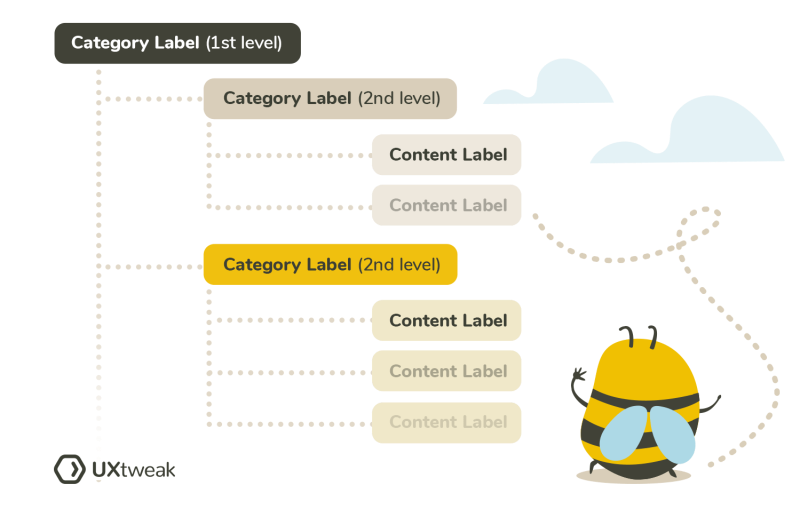PriceWaterhouseCoopers (PWC) discovered that 32% of customers would leave a brand they love after just one bad experience. This highlights the importance of listening to your customers and acting on their feedback. Voice of Customer methodologies provide the tools to gather insights and make improvements that keep your customers satisfied.
In this article, we will look at a variety of VoC methods, such as surveys and usability-centered session recordings, as well as tools to help you use them effectively.
Understanding these methodologies will help you better meet the needs of your customers and improve their overall experience.
Voice of Customer: what is it?
If you are looking for a way to listen directly to your customers and gain insights that can help you make better business decisions, the voice of the customer methodology is the way to go. This methodology collects customer feedback about their experiences.
This feedback can include anything from satisfaction with a recent purchase to frustrations with a product feature. The goal is to gather and use this information to improve your product and customer experience in general.
Examples of such methods include surveys that measure things like Net Promoter Score (NPS) and Customer Satisfaction (CSAT) and more in-depth methods like user interviews and focus groups.
Each method helps you get a clearer picture of how your customers feel and what they need.

What are Voice of Customer methodologies?
Voice of Customer (VoC) methodologies are simply the different approaches and tools for gathering, inspecting, and analyzing customer feedback. They can be broadly categorized into two types: quantitative and qualitative.
Quantitative methods focus on gathering numerical data that can be measured and analyzed. The Customer Effort Score (CES), Customer Satisfaction (CSAT), and Net Promoter Score (NPS) surveys are a few examples of these techniques. Customers’ opinions about your company, goods, or services are reflected in these surveys’ lucid, useful data.
Qualitative methods dig deep into the customer experience, offering insights beyond numbers. Using different research methods like customer interviews, focus groups, and usability testing allows you to explore the reasons behind customer feedback. You can learn about your customers’ frustrations, motivations, attitudes, and behaviors better with the help of these techniques.
For example: using a Customer Satisfaction (CSAT) survey to measure how happy your customers are with a new feature. If you discover that the average satisfaction score is lower than expected, you could conduct follow-up interviews with customers to understand why.
When you combine quantitative and qualitative methods, you can address the root causes of the problem and get a more complete picture.
Voice of Customer methodologies
The methodologies are diverse in the sense that both (quantitative and qualitative) offer different interpretations of customer behavior. It is best to use both for optimal results. Beyond general surveys and interviews, there are several other methods crucial for gaining a well-rounded understanding of your users.
Here’s a list of them all:
Relationship surveys
Relationship surveys focus on the big picture, helping you understand the long-term connection between your brand and your customers. These surveys are typically sent out periodically—perhaps annually or semi-annually—to assess customer loyalty and overall satisfaction.
For instance, you might ask users how satisfied they are with your digital platform’s usability over the past year, or how likely they are to recommend your service to others.
Suppose you’ve redesigned your website’s navigation to make it more intuitive. A relationship survey could reveal whether these changes have improved overall customer satisfaction. Asking users if they find your site easier to use compared to the previous version can determine if the redesign successfully improved the user experience.
Transactional surveys
Transactional surveys are sent out immediately after a specific interaction or transaction. These surveys are great for capturing customer feedback when the experience is still fresh in the customer’s mind. For example, after a customer completes a purchase on your e-commerce site, you might ask them to rate the ease of the checkout process.
If you’ve introduced a new feature in your app, you could send a quick survey to those who’ve interacted with it, asking how easy the feature was to use and if it met their expectations.
Net Promoter Score (NPS)
Net Promoter Score (NPS) is one of the most popular VoC metrics, often used to measure customer loyalty.
The survey is straightforward, typically asking, “How likely are you to recommend our product/service to a friend or colleague?” Based on their responses, customers are categorized as promoters, passives, or detractors.
Consider the impact of design changes on overall user satisfaction. After a significant update to your website’s UI, an NPS survey can reveal whether these changes have made users more likely to recommend your site.
Customer Satisfaction Survey (CSAT)
Aspects of your service or product that customers find particularly satisfactory are the focus of Customer Satisfaction (CSAT) surveys.
Simple rating scales, like 1 to 5, are frequently used in these surveys to determine respondents’ levels of satisfaction. When you launch a new dashboard for your app, for instance, a CSAT survey can tell you whether or not users find it intuitive and useful.
CSAT surveys are either sent out via email or implemented as a widget inside your product.
Customer Effort Score (CES)
Customer Effort Score (CES) measures how easy it is for customers to accomplish a task, like finding information or completing a transaction. This type of survey is crucial in UX, where the goal is often to reduce friction and make the user journey as smooth as possible.
Say you’ve streamlined the checkout process on your site, reducing the number of steps required to complete a purchase. A CES survey sent right after the transaction can reveal whether users found the new process easier or if there are still pain points to address.
Customer interviews
One of the easiest and most efficient ways to get insights is to have direct conversations with your customers.
Customer interviews allow you to ask questions directly and receive comprehensive answers that not only tell you what your customers think but also how they feel about each touchpoint and why they feel that way.
These interviews can be structured, semi-structured or unstructured, depending on the type of insights you’re looking to gather.
Usability testing
Usability testing is the ultimate reality check for any product. It’s where your design meets the real world as users interact with it while you observe. Instead of assuming users will navigate your app or website smoothly, usability testing reveals exactly where they get stuck or confused.
This is crucial, especially when you consider that only 1% of users say e-commerce websites consistently meet their expectations.
🐝 Watch this video guide to get started with usability testing today:
Session recordings
Session recordings capture user interactions on your site in real-time, allowing you to see exactly how users navigate through your pages. You can use this method if you notice a high drop-off on any particular page to learn the underlying cause for user exits.
Maybe there’s a confusing element, or the page isn’t loading content correctly; whatever the issue is, it is easy to pinpoint with this method.
Heatmaps
Heatmaps provide a visual representation of how users interact with your website. They show where users are clicking, how far they’re scrolling, and what content they’re focusing on the most. This method is invaluable for understanding what catches your users’ attention and what might be overlooked.
A heatmap can help you determine whether users are interacting with your call-to-action (CTA) or if they are diverting their attention to other elements on your website when you are trying to optimize it.
You can strategically change sections to increase user engagement if you find that they are not getting enough attention.

Tree testing
Tree testing is used to evaluate the structure of your website, ensuring that users can find what they’re looking for quickly and easily. It helps you understand whether your site’s navigation is intuitive or if users are struggling to locate information.

For instance, if you’re designing a new menu structure for your site, tree testing can help you determine if users can navigate through it effectively.
UXtweak Tree Testing Tool simplifies this process, allowing you to test different structures and see which one offers the best user experience.
Check out how tree testing works in these demos:
Social listening
Social listening is like eavesdropping on what people are saying about your brand, products, or industry across social media. It’s a way to tap into unfiltered opinions and get a real sense of what people love, what frustrates them, and what they wish you’d improve.
Say you notice a sudden surge in negative comments about a new feature you’ve introduced. This could signal that something isn’t working as expected. Addressing these conversations quickly allows you to resolve issues before they escalate, showing your customers that you’re responsive and attentive.
Pairing social listening with other tools—like heatmaps to fine-tune a landing page, tree testing to perfect site navigation, or customer panels for ongoing feedback—gives you a complete view of your customers’ needs.
Review monitoring
Online reviews provide a wealth of information about customer satisfaction and areas that need improvement. Keep an eye on platforms like Google, Yelp, and industry-specific review sites, so you can gather unfiltered feedback that often reflects broader customer sentiment.
Let’s assume your customers praise your product’s performance but repeatedly mention setup difficulties, it’s a clear sign to improve your instructions or onboarding process. Regularly monitoring reviews helps you catch these issues early and enhance the overall experience.

Focus groups
Focus groups involve bringing together a small group of users to talk about their experiences, opinions, and expectations regarding your product or a specific feature. This approach is great for digging deeper into complex issues and getting a clearer sense of how users feel.
For example, if you’re planning a major redesign of your app, focus groups can help you understand what users like about the current design, what they think could be improved, and which features they find most valuable.
This kind of feedback is invaluable in steering your redesign efforts, making sure the new version aligns with what your users really want.
Customer panels
Often, the best way to collect user feedback is to do so consistently from a group of selected users who provide ongoing feedback about your product; this is where a customer panel comes in handy.
The ideal use case for this method is when you’re in the process of rolling out a series of new features and need feedback in each stage of the release, ensuring that any issue is addressed promptly before going live.
Live chat
Live chat lets you connect with customers in real time, offering immediate support and capturing valuable feedback on the spot.
According to a study by Hiverhq, 63% of consumers prefer live chat as their go-to support channel. If you notice repeated questions about a particular feature, it could signal a need for improvement.
What’s more, providing this instant support can encourage customers to return to your site and make future purchases.
Customer support reports
Your customer support team is constantly in touch with users, hearing firsthand what’s working well and what’s causing frustration. It provides clear insights into reoccurring problems and potential areas for improvement with your product or service, making this feedback extremely valuable.
For example, if several users are having trouble with a particular feature, it may be time for a redesign. Jonathan Courtney, a well-known product designer, perfectly puts it this way:
Sentiment analysis
Moving beyond simple data, sentiment analysis digs into the emotions behind customer feedback. Instead of just counting how many times your brand is mentioned online, this approach helps you understand the mood and feelings driving those mentions. It’s a powerful tool for gauging overall customer satisfaction or identifying brewing dissatisfaction before it escalates.
Think of it this way: if, after launching a new feature, you notice a subtle shift in the tone of social media comments, this could indicate an issue that needs immediate attention, allowing you to respond proactively.
According to many experts, sentiment analysis offers a nuanced view of customer perception, helping you fine-tune your strategies based on real-time data.
Voice of Customer tools
To capture the Voice of Customer effectively, having the right tools is essential. Here’s a quick overview of the key types:
Survey tools are great for getting direct feedback. Use them to measure customer loyalty with Net Promoter Score (NPS), satisfaction with Customer Satisfaction (CSAT), or effort with Customer Effort Score (CES).
Live interview and testing tools help you see how users interact with your product. With usability testing and session recordings, you can pinpoint where users face difficulties and make improvements to enhance their experience.
Review monitoring tools keep track of what’s being said about your brand online. They help you stay informed about customer sentiment and address issues promptly.

Wrapping up
To truly harness the Voice of Customer, integrate a few key methods into your strategy. Begin with surveys to gather direct feedback from your users, whether through NPS, CSAT, or CES. Next, use usability testing to observe how users interact with your product and identify any pain points. Don’t forget to review monitoring to track what people are saying about your brand online.
Putting these strategies into practice can provide insightful analysis and assist you in making significant improvements.
Try UXtweak for tools and practical assistance in streamlining these procedures. Our platform is made to help you efficiently collect and evaluate customer feedback so that you are always aware of what your users need.






